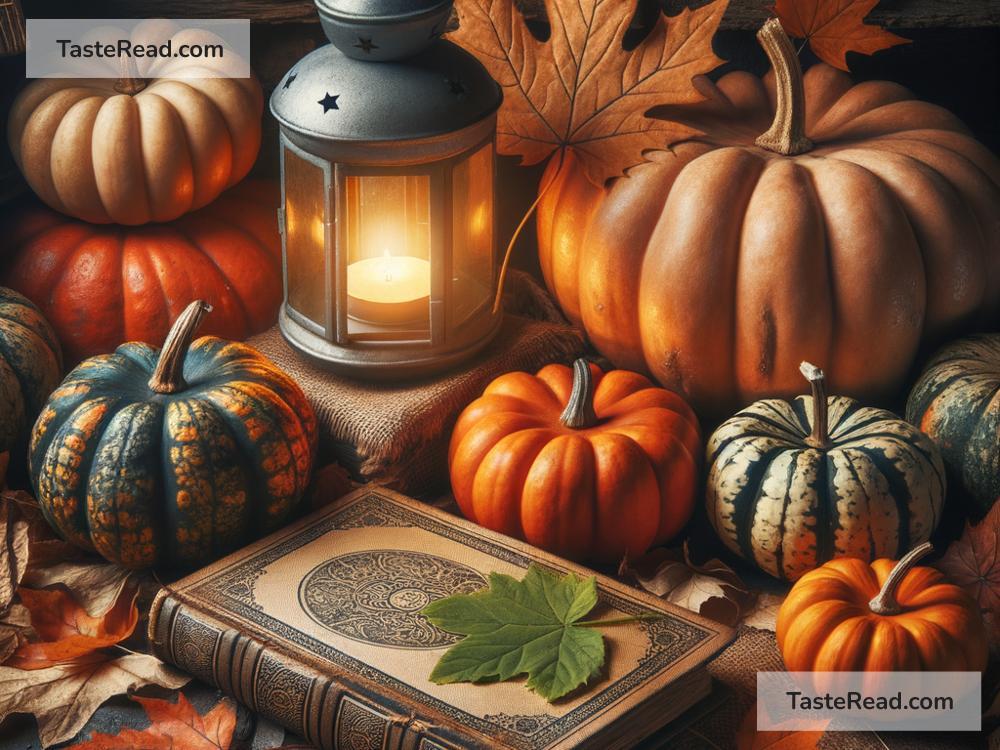The Curious Symbolism of Pumpkins in Folklore
Pumpkins are more than just a crop harvested in the fall—they are rich in symbolism, legends, and meanings found in folklore across the world. While their associations with Halloween in modern Western culture are widespread, pumpkins have been used in stories and traditions for centuries. They represent many things, from life and rebirth to mystery and transformation. Let’s explore the curious symbolism of pumpkins and their fascinating role in folklore.
Pumpkins as a Symbol of the Harvest
Pumpkins are grown in so many countries, but they are especially linked to the autumn season in places like North America and Europe. Because pumpkins grow well during the summer and are ready to pick in the fall, they naturally became symbols of the harvest. In ancient agricultural societies, people depended on crops for survival, so harvest time was immensely important. Pumpkins represented abundance, prosperity, and the rewards of hard work. Seeing a pumpkin in folklore sometimes meant good fortune—or at least a full belly during hard times.
Pumpkins in Transformation Tales
One of the most famous pumpkin stories comes from the fairy tale Cinderella. In the story, Cinderella’s fairy godmother transforms a humble pumpkin into a magical carriage so that Cinderella can attend the royal ball. This scene made pumpkins a symbol of transformation and possibility. It’s a reminder that even the most ordinary thing can hold extraordinary potential.
The pumpkin in Cinderella is not just a practical tool—it’s a metaphor that shows how change (whether magical or real) can happen suddenly and unexpectedly. In many versions of folklore, pumpkins are connected to cycles of growth, change, and renewal. Their transformation from seed to vine to fruit reflects the natural rhythm of life itself.
Pumpkins and Halloween: A Symbol of Mystery
Many people associate pumpkins with Halloween, especially because of jack-o’-lanterns, the carved pumpkins lit with candles inside. But where does this tradition come from? It originated from old Irish and Scottish folklore involving turnips—and later pumpkins—carved with scary faces or designs.
The practice connects to the legend of Stingy Jack, a clever trickster who tricked the Devil multiple times. As punishment, Jack was doomed to wander the Earth forever, carrying a carved-out turnip with a glowing ember inside to light his way. When Irish immigrants brought this story to North America, they adapted it to the larger, more practical pumpkin.
In folklore, jack-o’-lanterns were used to ward off evil spirits or scare away creatures lurking in the dark. They became symbols of protection and mystery. Today, they are more playful, decorating porches during Halloween, but the eerie glow of a carved pumpkin still sparks imagination about the supernatural.
Pumpkins and Magic
In some tales, pumpkins are connected to magic and the unknown. Beyond Cinderella, other cultures have seen this bright orange fruit as something mystical. Pumpkins often appear in enchanted gardens or as shrinking, growing, or talking objects in folklore.
In Native American legends, pumpkins symbolize nourishment and survival. They were (and still are) a staple crop that could be dried, cooked, or stored, ensuring food for many months. The pumpkin was seen not just as food but as a gift of life, often protected under spiritual beliefs.
Pumpkins as a Symbol of Humility
Folklore doesn’t always glorify pumpkins as objects of beauty like apples or roses. Their round, heavy shape and simple appearance often symbolize humility or modesty. Unlike delicate flowers or glamorous fruits, pumpkins are the sturdy, reliable, hardworking crop. In some stories, characters who love pumpkins embrace simplicity and appreciate the quiet beauty of life. Pumpkins remind us that sometimes the most unassuming things can be worthy of admiration.
Pumpkins in Cultural Traditions Around the World
Pumpkins are linked to traditions beyond Halloween. In Mexico, pumpkins are associated with Día de Muertos (Day of the Dead), a time to honor deceased loved ones. Pumpkin dishes, like candied pumpkin, are used as offerings to ancestors.
In parts of Asia, pumpkins are symbols of health and longevity. In Chinese folklore, gourds—closely related to pumpkins—were thought to ward off evil spirits, bring blessings, and even store precious magic. These ideas often connect pumpkins and gourds to life itself.
In Africa, varieties of pumpkins appear in myths about family, fertility, and abundance. Pumpkin seeds symbolize growth and continuation, showing how pumpkins are not just a fruit but a strong metaphor for renewal.
Pumpkins Today: A Blend of Old and New
In today’s world, pumpkins still carry their folkloric significance, even if we don’t always notice. Every pumpkin patch we visit in the fall carries echoes of harvest traditions. Picking out a pumpkin with family or friends evokes the same feelings of abundance people cherished in ancient times.
Carving jack-o’-lanterns continues the tradition of creating artwork that might ward off evil—or at least bring joy during Halloween. Even making pumpkin pie connects us to the symbolic richness of this orange fruit, combining nourishment and ritual in one delicious slice.
So, the next time you see a pumpkin, think of all the stories it holds. From humble beginnings in farming fields to tales of magic and mystery, pumpkins are full of lessons that have lasted through time. They remind us to embrace change, celebrate life’s humble moments, and hold on to the hope of transformation. Pumpkins may seem simple, but their symbolism in folklore is anything but ordinary.


